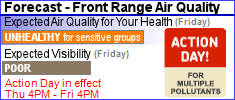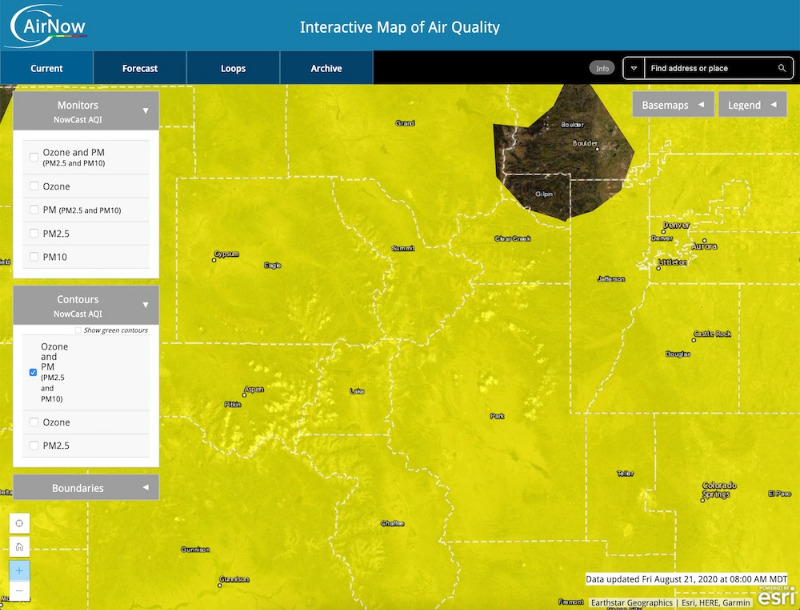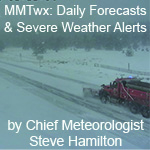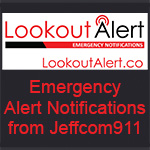- Posts: 9550
- Thank you received: 219
- Forum
- Life Up the Hill
- Scanner & Emergency Info, Weather Forecasts
- Front Range Air Quality Forecast & Colorado Smoke Outlook Aug 21
Front Range Air Quality Forecast & Colorado Smoke Outlook Aug 21
- MountainTownAlerts
-
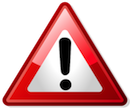 Topic Author
Topic Author
- Mountain Legend
-

Less
More
21 Aug 2020 09:22 #1
by MountainTownAlerts
The Colorado Department of Public Health and Environment and the Regional Air Quality Council have issued an ACTION DAY ALERT at 4 p.m. on Thursday, August 20, 2020 for the Front Range Urban Corridor from Douglas County north to Larimer and Weld counties, including the Denver-Boulder area, Fort Collins and Greeley.
Due to wildfire smoke transported into the Front Range, Ozone and Fine Particulate concentrations could both reach the Unhealthy for Sensitive Groups category at times through at least Friday afternoon. The greatest air quality impacts are expected to be for locations within the Denver Metro area, as well as northward along the I-25 corridor to Fort Collins, including areas west of I-25 within the lower foothills, especially in Larimer County due to smoke from the Cameron Peak wildfire.
This Multiple Pollutants Action Day Alert will remain in effect until at least 4 p.m. Friday, August 21, 2020.
For statewide conditions, forecasts and advisories, visit:
www.colorado.gov/airquality/colorado_summary.aspx
The highest Ozone related AQI at 7 o'clock AM Mountain Standard Time on August 21, 2020, is 46 which indicates Good ozone air quality. It was recorded by the BHWK ambient ozone monitor.
The highest Particulate Matter (PM2.5) related AQI at 7 o'clock AM Mountain Standard Time on August 21, 2020, is 70 which indicates Moderate Particulate Matter (PM2.5) air quality. It was recorded by the CHAT ambient monitor. Respiratory symptoms possible in unusually sensitive individuals, possible aggravation of heart or lung disease in people with cardiopulmonary disease and older adults. Unusually sensitive people should consider reducing prolonged or heavy exertion.
Front Range Air Quality Forecast & Colorado Smoke Outlook
FRONT RANGE AIR QUALITY FORECAST:
Friday, August 21, 2020, 7:20 AM MDT
Due to wildfire smoke transported into the Front Range, Ozone and Fine Particulate concentrations could both reach the Unhealthy for Sensitive Groups category at times through at least Friday afternoon. The greatest air quality impacts are expected to be for locations within the Denver Metro area, as well as northward along the I-25 corridor to Fort Collins, including areas west of I-25 within the lower foothills, especially in Larimer County due to smoke from the Cameron Peak wildfire. In all of these areas, people with heart or lung disease, older adults, and children should reduce prolonged or heavy exertion on Friday. For all other areas within the Front Range, unusually sensitive people should consider reducing prolonged or heavy exertion on Friday.
Ozone concentrations are expected to be in the Moderate to Unhealthy for Sensitive Groups range on Friday. See above for health recommendations.
Fine Particulate Matter concentrations are expected to be in the Moderate to Unhealthy for Sensitive Groups range on Friday. See above for health recommendations.
Carbon Monoxide concentrations are expected to be in the Good category on Friday.
Nitrogen Dioxide concentrations are expected to be in the Good category on Friday.
Visibility on Friday is expected to be Moderate to Poor.
COLORADO SMOKE OUTLOOK:
Friday, August 21, 2020, 8:40 AM MDT
Air Quality Health Advisory for Wildfire Smoke
Issued for portions of central and western Colorado
Issued at 9:00 AM MDT, Friday, August 21, 2020
Issued by the Colorado Department of Public Health and Environment
Affected Area: Mesa, Delta, Montrose, San Miguel, Ouray, Dolores, San Juan, Montezuma, La Plata, western Eagle, and central and eastern Garfield counties. Locations include, but are not limited to Fruita, Grand Junction, Palisade, De Beque, Delta, Montrose, Ouray, Rico, Silverton, Cortez, Durango, Silt Parachute, Rifle, Glenwood Springs, and Carbondale.
Advisory in Effect: 9:00 AM MDT, Friday, August 21, 2020 to 9:00 AM MDT, Saturday, August 22, 2020.
Public Health Recommendations: If smoke is thick or becomes thick in your neighborhood you may want to remain indoors. This is especially true for those with heart disease, respiratory illnesses, the very young, and the elderly. Consider limiting outdoor activity when moderate to heavy smoke is present. Consider relocating temporarily if smoke is present indoors and is making you ill. If visibility is less than 5 miles in smoke in your neighborhood, smoke has reached levels that are unhealthy.
Outlook: Areas of moderate to heavy smoke have been observed Friday morning across portions of central and western Colorado due to the Pine Gulch and Grizzly Creek wildfires. Smoke will gradually diminish late Friday morning as atmospheric mixing increases, with the slowest improvement occurring in valley locations. By Friday afternoon the wind at the fires will mainly be out of a north to northwesterly direction. This will result in the highest threat for periods of moderate to heavy smoke to areas south and southeast of both wildfires. By late Friday evening smoke will begin to drain into lower lying areas surrounding both fires. This will bring longer duration, heavy smoke through early Saturday morning to several drainages near the Pine Gulch wildfire including into the De Beque, Grand Junction and Fruita areas. Meanwhile, heavy overnight smoke from the Grizzly Creek wildfire will remain possible for locations along Interstate 70 in central and eastern Garfield County.
Air Quality Health Advisory for Wildfire Smoke
Issued for portions of northern and central Colorado
Issued at 9:00 AM MDT, Friday, August 21, 2020
Issued by the Colorado Department of Public Health and Environment
Affected Area: Jackson, Grand, Summit, Clear Creek and Gilpin counties. Locations include, but are not limited to Rand, Kremmling, Granby, Winter Park, Breckenridge, Silverthorne, Georgetown, and Central City.
Advisory in Effect: 9:00 AM MDT, Friday, August 21, 2020 to 9:00 AM MDT, Saturday, August 22, 2020.
Public Health Recommendations: If smoke is thick or becomes thick in your neighborhood you may want to remain indoors. This is especially true for those with heart disease, respiratory illnesses, the very young, and the elderly. Consider limiting outdoor activity when moderate to heavy smoke is present. Consider relocating temporarily if smoke is present indoors and is making you ill. If visibility is less than 5 miles in smoke in your neighborhood, smoke has reached levels that are unhealthy.
Outlook: Areas of moderate to heavy smoke have been observed across portions of northern and central Colorado due to the Cameron Peak and Williams Fork wildfires. Smoke will gradually diminish late Friday morning as atmospheric mixing increases, with the slowest improvement occurring in valley locations. By Friday afternoon the wind at the fires will be from a northwesterly direction. This could bring periods of moderate to heavy smoke for areas to the southeast of both wildfires through Friday evening. By late Friday evening smoke will begin to drain into lower lying areas surrounding both fires. This will bring longer duration, heavy smoke through early Saturday morning to drainages near the Cameron Peak wildfire including northward along the Laramie River to the Wyoming state line, and eastward along Poudre Canyon Road. Meanwhile, heavy overnight smoke from the Williams Fork wildfire will impact locations along Ute Pass Road and Williams Fork. Note: Larimer County and other Front Range locations will be impacted by smoke from these wildfires. However, those locations are currently covered by an advisory under the regulatory Action Day program. For more information: www.colorado.gov/airquality/colorado_summary.aspx
Light to moderate concentrations of smoke are also possible near small wildfires and prescribed burns around the state.
What if there is a wildfire or smoke in your area?
The focus of the Colorado Smoke Outlook is on large fires (e.g., greater than 100 acres in size). Nevertheless, smoke from smaller fires, prescribed fires, and/or smoke from new fires not yet known to CDPHE air quality meteorologists may cause locally heavy smoke. If there is smoke in your neighborhood, see the public health recommendations below.
Public health recommendations for areas affected by smoke:
If smoke is thick or becomes thick in your neighborhood you may want to remain indoors. This is especially true for those with heart disease, respiratory illnesses, the very young, and the elderly. Consider limiting outdoor activity when moderate to heavy smoke is present. Consider relocating temporarily if smoke is present indoors and is making you ill. IF VISIBILITY IS LESS THAN 5 MILES IN SMOKE IN YOUR NEIGHBORHOOD, SMOKE HAS REACHED LEVELS THAT ARE UNHEALTHY.
Summer Ozone Program
Ground-level ozone is an air pollution problem that impacts the health of all Coloradans. Exposure can cause acute respiratory problems and trigger asthma attacks. During Ozone Action Alerts, avoid rigorous outdoor activity during the heat of the day. Prolonged exposure can cause long-lasting damage to your lungs.
You CAN make a difference by doing your part to improve air quality along Denver's Front Range. Combining or skipping just two car trips a week has a positive impact on our air quality. Find other easy solutions that fit your lifestyle from Simple Steps. Better Air. ( www.SimpleStepsBetterAir.org ), a program of the Regional Air Quality Council.
WHAT IS AN ACTION DAY?: An Action Day for fine particulate matter, carbon monoxide, ozone or other pollutants indicates that either current air quality is unhealthy or conditions are expected to worsen later in the day or on the next day. Action Days for air pollutants generally indicate that air quality will be in either the Unhealthy or Unhealthy-for-Sensitive-Groups categories according to the Air Quality Index. Action Days always convey overarching public health recommendations, and, according to season, trigger a variety of mandatory and voluntary pollution prevention measures. For example, during the summer open burning is prohibited when an Action Day for ozone and/or fine particulates is in effect. During the winter, residential burning restrictions are in effect when an Action Day for Visibility is in effect.
For a detailed description of both the AIR QUALITY INDEX and the VISIBILITY STANDARD INDEX please visit www.colorado.gov/airquality/brochure.aspx
COLORADO OPEN BURN FORECAST: For those with permits for open burning, that is the burning of waste materials or vegetation outside, check the following webpage to find out if open burning is allowed today. Keep in mind that open burning is prohibited when an Action Day is in effect:
www.colorado.gov/airquality/burn_forecast.aspx
FOR CURRENT FRONT RANGE ACTION DAYS/ADVISORIES:
www.colorado.gov/airquality/advisory.aspx
FOR CURRENT AIR QUALITY CONDITIONS STATEWIDE:
www.colorado.gov/airquality/air_quality.aspx
SOCIAL MEDIA:
www.facebook.com/cdphe.apcd
twitter.com/cdpheapcd
AIR QUALITY NOTIFICATIONS:
www.colorado.gov/airquality/request_alerts.aspx (CDPHE automated e-mail alerts)
www.enviroflash.info/signup.cfm (CDPHE forecasts via automated e-mails from the EPA)
_ _ _ _ _ _ _ _ _ _ _ _ _ _ _ _ _ _ _ _ _ _ _ _ _ _ _ _ _ _ _ _ _ _ _ _ _ _ _ _ _ _ _ _ _ _ _ _ _
Air Quality Map from AirNow.gov August 21, 2020
The Colorado Department of Public Health and Environment and the Regional Air Quality Council have issued an ACTION DAY ALERT at 4 p.m. on Thursday, August 20, 2020 for the Front Range Urban Corridor from Douglas County north to Larimer and Weld counties, including the Denver-Boulder area, Fort Collins and Greeley.
Due to wildfire smoke transported into the Front Range, Ozone and Fine Particulate concentrations could both reach the Unhealthy for Sensitive Groups category at times through at least Friday afternoon. The greatest air quality impacts are expected to be for locations within the Denver Metro area, as well as northward along the I-25 corridor to Fort Collins, including areas west of I-25 within the lower foothills, especially in Larimer County due to smoke from the Cameron Peak wildfire.
This Multiple Pollutants Action Day Alert will remain in effect until at least 4 p.m. Friday, August 21, 2020.
For statewide conditions, forecasts and advisories, visit:
www.colorado.gov/airquality/colorado_summary.aspx
The highest Ozone related AQI at 7 o'clock AM Mountain Standard Time on August 21, 2020, is 46 which indicates Good ozone air quality. It was recorded by the BHWK ambient ozone monitor.
The highest Particulate Matter (PM2.5) related AQI at 7 o'clock AM Mountain Standard Time on August 21, 2020, is 70 which indicates Moderate Particulate Matter (PM2.5) air quality. It was recorded by the CHAT ambient monitor. Respiratory symptoms possible in unusually sensitive individuals, possible aggravation of heart or lung disease in people with cardiopulmonary disease and older adults. Unusually sensitive people should consider reducing prolonged or heavy exertion.
Front Range Air Quality Forecast & Colorado Smoke Outlook
FRONT RANGE AIR QUALITY FORECAST:
Friday, August 21, 2020, 7:20 AM MDT
Due to wildfire smoke transported into the Front Range, Ozone and Fine Particulate concentrations could both reach the Unhealthy for Sensitive Groups category at times through at least Friday afternoon. The greatest air quality impacts are expected to be for locations within the Denver Metro area, as well as northward along the I-25 corridor to Fort Collins, including areas west of I-25 within the lower foothills, especially in Larimer County due to smoke from the Cameron Peak wildfire. In all of these areas, people with heart or lung disease, older adults, and children should reduce prolonged or heavy exertion on Friday. For all other areas within the Front Range, unusually sensitive people should consider reducing prolonged or heavy exertion on Friday.
Ozone concentrations are expected to be in the Moderate to Unhealthy for Sensitive Groups range on Friday. See above for health recommendations.
Fine Particulate Matter concentrations are expected to be in the Moderate to Unhealthy for Sensitive Groups range on Friday. See above for health recommendations.
Carbon Monoxide concentrations are expected to be in the Good category on Friday.
Nitrogen Dioxide concentrations are expected to be in the Good category on Friday.
Visibility on Friday is expected to be Moderate to Poor.
COLORADO SMOKE OUTLOOK:
Friday, August 21, 2020, 8:40 AM MDT
Air Quality Health Advisory for Wildfire Smoke
Issued for portions of central and western Colorado
Issued at 9:00 AM MDT, Friday, August 21, 2020
Issued by the Colorado Department of Public Health and Environment
Affected Area: Mesa, Delta, Montrose, San Miguel, Ouray, Dolores, San Juan, Montezuma, La Plata, western Eagle, and central and eastern Garfield counties. Locations include, but are not limited to Fruita, Grand Junction, Palisade, De Beque, Delta, Montrose, Ouray, Rico, Silverton, Cortez, Durango, Silt Parachute, Rifle, Glenwood Springs, and Carbondale.
Advisory in Effect: 9:00 AM MDT, Friday, August 21, 2020 to 9:00 AM MDT, Saturday, August 22, 2020.
Public Health Recommendations: If smoke is thick or becomes thick in your neighborhood you may want to remain indoors. This is especially true for those with heart disease, respiratory illnesses, the very young, and the elderly. Consider limiting outdoor activity when moderate to heavy smoke is present. Consider relocating temporarily if smoke is present indoors and is making you ill. If visibility is less than 5 miles in smoke in your neighborhood, smoke has reached levels that are unhealthy.
Outlook: Areas of moderate to heavy smoke have been observed Friday morning across portions of central and western Colorado due to the Pine Gulch and Grizzly Creek wildfires. Smoke will gradually diminish late Friday morning as atmospheric mixing increases, with the slowest improvement occurring in valley locations. By Friday afternoon the wind at the fires will mainly be out of a north to northwesterly direction. This will result in the highest threat for periods of moderate to heavy smoke to areas south and southeast of both wildfires. By late Friday evening smoke will begin to drain into lower lying areas surrounding both fires. This will bring longer duration, heavy smoke through early Saturday morning to several drainages near the Pine Gulch wildfire including into the De Beque, Grand Junction and Fruita areas. Meanwhile, heavy overnight smoke from the Grizzly Creek wildfire will remain possible for locations along Interstate 70 in central and eastern Garfield County.
Air Quality Health Advisory for Wildfire Smoke
Issued for portions of northern and central Colorado
Issued at 9:00 AM MDT, Friday, August 21, 2020
Issued by the Colorado Department of Public Health and Environment
Affected Area: Jackson, Grand, Summit, Clear Creek and Gilpin counties. Locations include, but are not limited to Rand, Kremmling, Granby, Winter Park, Breckenridge, Silverthorne, Georgetown, and Central City.
Advisory in Effect: 9:00 AM MDT, Friday, August 21, 2020 to 9:00 AM MDT, Saturday, August 22, 2020.
Public Health Recommendations: If smoke is thick or becomes thick in your neighborhood you may want to remain indoors. This is especially true for those with heart disease, respiratory illnesses, the very young, and the elderly. Consider limiting outdoor activity when moderate to heavy smoke is present. Consider relocating temporarily if smoke is present indoors and is making you ill. If visibility is less than 5 miles in smoke in your neighborhood, smoke has reached levels that are unhealthy.
Outlook: Areas of moderate to heavy smoke have been observed across portions of northern and central Colorado due to the Cameron Peak and Williams Fork wildfires. Smoke will gradually diminish late Friday morning as atmospheric mixing increases, with the slowest improvement occurring in valley locations. By Friday afternoon the wind at the fires will be from a northwesterly direction. This could bring periods of moderate to heavy smoke for areas to the southeast of both wildfires through Friday evening. By late Friday evening smoke will begin to drain into lower lying areas surrounding both fires. This will bring longer duration, heavy smoke through early Saturday morning to drainages near the Cameron Peak wildfire including northward along the Laramie River to the Wyoming state line, and eastward along Poudre Canyon Road. Meanwhile, heavy overnight smoke from the Williams Fork wildfire will impact locations along Ute Pass Road and Williams Fork. Note: Larimer County and other Front Range locations will be impacted by smoke from these wildfires. However, those locations are currently covered by an advisory under the regulatory Action Day program. For more information: www.colorado.gov/airquality/colorado_summary.aspx
Light to moderate concentrations of smoke are also possible near small wildfires and prescribed burns around the state.
What if there is a wildfire or smoke in your area?
The focus of the Colorado Smoke Outlook is on large fires (e.g., greater than 100 acres in size). Nevertheless, smoke from smaller fires, prescribed fires, and/or smoke from new fires not yet known to CDPHE air quality meteorologists may cause locally heavy smoke. If there is smoke in your neighborhood, see the public health recommendations below.
Public health recommendations for areas affected by smoke:
If smoke is thick or becomes thick in your neighborhood you may want to remain indoors. This is especially true for those with heart disease, respiratory illnesses, the very young, and the elderly. Consider limiting outdoor activity when moderate to heavy smoke is present. Consider relocating temporarily if smoke is present indoors and is making you ill. IF VISIBILITY IS LESS THAN 5 MILES IN SMOKE IN YOUR NEIGHBORHOOD, SMOKE HAS REACHED LEVELS THAT ARE UNHEALTHY.
Summer Ozone Program
Ground-level ozone is an air pollution problem that impacts the health of all Coloradans. Exposure can cause acute respiratory problems and trigger asthma attacks. During Ozone Action Alerts, avoid rigorous outdoor activity during the heat of the day. Prolonged exposure can cause long-lasting damage to your lungs.
You CAN make a difference by doing your part to improve air quality along Denver's Front Range. Combining or skipping just two car trips a week has a positive impact on our air quality. Find other easy solutions that fit your lifestyle from Simple Steps. Better Air. ( www.SimpleStepsBetterAir.org ), a program of the Regional Air Quality Council.
WHAT IS AN ACTION DAY?: An Action Day for fine particulate matter, carbon monoxide, ozone or other pollutants indicates that either current air quality is unhealthy or conditions are expected to worsen later in the day or on the next day. Action Days for air pollutants generally indicate that air quality will be in either the Unhealthy or Unhealthy-for-Sensitive-Groups categories according to the Air Quality Index. Action Days always convey overarching public health recommendations, and, according to season, trigger a variety of mandatory and voluntary pollution prevention measures. For example, during the summer open burning is prohibited when an Action Day for ozone and/or fine particulates is in effect. During the winter, residential burning restrictions are in effect when an Action Day for Visibility is in effect.
For a detailed description of both the AIR QUALITY INDEX and the VISIBILITY STANDARD INDEX please visit www.colorado.gov/airquality/brochure.aspx
COLORADO OPEN BURN FORECAST: For those with permits for open burning, that is the burning of waste materials or vegetation outside, check the following webpage to find out if open burning is allowed today. Keep in mind that open burning is prohibited when an Action Day is in effect:
www.colorado.gov/airquality/burn_forecast.aspx
FOR CURRENT FRONT RANGE ACTION DAYS/ADVISORIES:
www.colorado.gov/airquality/advisory.aspx
FOR CURRENT AIR QUALITY CONDITIONS STATEWIDE:
www.colorado.gov/airquality/air_quality.aspx
SOCIAL MEDIA:
www.facebook.com/cdphe.apcd
twitter.com/cdpheapcd
AIR QUALITY NOTIFICATIONS:
www.colorado.gov/airquality/request_alerts.aspx (CDPHE automated e-mail alerts)
www.enviroflash.info/signup.cfm (CDPHE forecasts via automated e-mails from the EPA)
_ _ _ _ _ _ _ _ _ _ _ _ _ _ _ _ _ _ _ _ _ _ _ _ _ _ _ _ _ _ _ _ _ _ _ _ _ _ _ _ _ _ _ _ _ _ _ _ _
Air Quality Map from AirNow.gov August 21, 2020
Please Log in or Create an account to join the conversation.
- Forum
- Life Up the Hill
- Scanner & Emergency Info, Weather Forecasts
- Front Range Air Quality Forecast & Colorado Smoke Outlook Aug 21
Time to create page: 0.148 seconds

